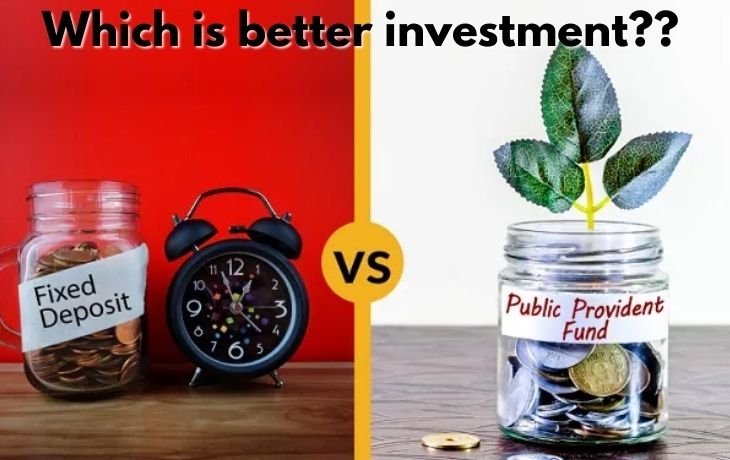Regarding capital assurance, both PPF and duty saver FDs by the post office and bank score high. Post office term stores accompany sovereign assurance from the Indian Government while bank stores of those recorded as booked banks by the Reserve Bank of India (RBI) are protected up to Rs 5 lakh under DICGC, an RBI auxiliary.
The DICGC protection program covers aggregate stores of every contributor in fixed, repeating, current and investment accounts of up to Rs 5 lakh with each booked bank if there should be an occurrence of bank disappointment.
PPF And Fixed Deposit Interest Rates
Public Provident Fund offers a financing cost of 7.1% p.a., which is higher than most banks' FDs and mailing station term stores. The most noteworthy assessment saver FD rates offered by public and private area banks presently go up to 5.30%-6.75% p.a. Some modest banks have been offering 6.25%-7.25% p.a. financing costs on TaxSaver FDs. Mailing station five-year term stores as of now offer a financing cost of 6.7% p.a.
Taxability Of Profits On PPF And Fixed Deposit
With regards to the taxability of profits, PPF outscores charge saver FDs. The premium pay produced by FDs is burdened according to the pertinent expense section of the contributor. While if there should be an occurrence of PPF, the interest pay and development continues are absolutely tax-exempt, making its post-assessment forms probably the most elevated one among all fixed-personal duty saving instruments.
One urgent boundary where charge saver FDs outscore PPF is as far as liquidity. While charge-saving FDs accompany a lock-in time of 5 years, PPF speculations get secured for an exceptionally long time. Having said that, PPF permits halfway withdrawals and untimely conclusion. Incomplete withdrawals are permitted just a single time in a year, beginning from the seventh year of membership through the untimely conclusion is allowed following 5 years for explicit purposes.
Likewise, credit against PPF stores can profit from the third year to the fifth year, yet just up to 25% of the equilibrium accessible at 2 years before the advance application year.
